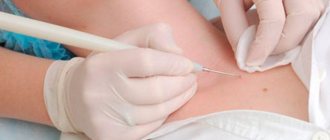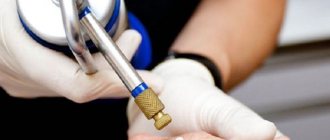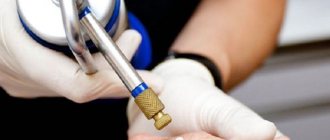Papillomas can be localized in any area of the skin. The most common places for the localization of benign neoplasms of the skin and mucous membranes are the skin of the folds of the neck, axillary zones, inguinal-femoral folds and pubis, genitals and gluteal folds, and perianal zone. This is due to the fact that in these places the skin is most susceptible to friction and the appearance of microtraumas, through which the human papillomavirus (HPV) enters from an infected environment.
The source of HPV infection is a sick person (through direct bodily or sexual contact) and objects contaminated with the virus (towels, washcloths, razors).
The incubation period of human papillomavirus infection ranges from two weeks to several years.
It is also possible that papillomas may appear on the mucous membranes of the lips and mouth, nose, external genitalia, vagina and cervix. With HPV infection of the cervix, dysplasia occurs - changes in the cellular composition of the mucosa, which increases the risk of cervical cancer. There are several dozen varieties of HPV, oncogenic - papillomavirus types 16 and 18, which can be identified by DNA testing (PCR) of a cervical scraping.
In appearance, papillomas on the skin look like neoplasms that protrude above the skin level in the form of hemispherical flat nodules or threads of soft and moderately dense consistency ranging in size from 1 mm to 5–7 mm. Neoplasms can have a “thin stalk” or a wider base. Papillomas usually have the color of the surrounding skin, sometimes there is a pink tint in the lesions.
Papillomas in the area of the external genitalia are called genital warts. They are transmitted through intimate contact (a condom does not always protect against this infection). Condylomas acuminata have the appearance of pink soft elastic formations on a thin stalk with a papillary surface, reminiscent of the appearance of a “cockscomb” or “cauliflower”.
The size of condylomas usually does not exceed 5 mm, but when several elements group and merge, foci of condylomatosis with sizes up to several centimeters are formed.
What studies can be prescribed for a patient with papillomas?
If a patient is diagnosed with papillomas, he is usually prescribed:
- Examination for the full range of sexually transmitted infections: syphilis and HIV, gonorrhea, trichomoniasis, chlamydia, genitourinary mycoplasmosis. This is necessary in the case of genital papillomas. To do this, the patient undergoes blood sampling from a vein and a smear examination for urogenital infections from the lower parts of the genitourinary tract (urethra, vagina, cervix).
- Blood test for sugar, cholesterol and lipid profile, bilirubin and transaminases. A clinical blood test can be offered to the patient to exclude those underlying diseases that served as a prerequisite for the presence of multiple papillomas on the skin or mucous membranes.
- Blood test for cryoglobulins - in case of suspected cryoglobulinemia before using the cryodestruction method.
Women with manifestations of genital HPV infection are prescribed a smear test for oncocytology and colposcopy - an examination of the condition of the cervical mucosa under a magnifying device (colposcope).
Removal of papillomas with nitrogen
Papilloma belongs to the category of benign neoplasms.
It is viral in nature and is localized on the skin and mucous membranes of the human body. The virus that causes formations on the skin is transmitted, as a rule, through household or sexual contact.
The frivolity shown when detecting the skin growths in question becomes the cause of their malignancy (degeneration into a malignant form). In this case, the severity of the disease does not play a role. Even if single formations are visualized, their treatment should not be neglected. There may be no symptoms at all. Microtraumas at the location of the growth give impetus to its growth.
Who treats papillomas?
Not every person with human papillomavirus infection is aware of which specialist should be visited for its treatment. Doctors - a dermatologist and an immunologist - are called upon to solve this problem. To eliminate the external manifestations of the virus, you need to make an appointment with him, during which tactics for influencing the disease are developed. Often the doctor opts for a method such as removing papillomas with nitrogen. Otherwise, the procedure is called cryodestruction.
Removal of papillomas using cryodestruction method
Cryodestruction is based on modern surgical technologies that help to carry out local low-temperature effects on the tumor. Healthy tissues are hardly affected. Cryonecrosis is accompanied by vascular, venous and arterial blockage in the area of viral damage. This prevents bleeding from occurring. Healing of the skin area affected by cryotherapy occurs quickly. There is no gross scarring of the tissue.
Medical manipulation is not difficult. It is painless, since the cold helps destroy the sensory nerve endings. Complications are rare. Inpatient placement of the patient is not required.
How is nitrogen stripping done?
Liquid nitrogen falls on the surface of the papilloma, and it freezes. The doctor uses special equipment. The time of cold exposure varies from 10 to 120 seconds and is determined by the type and depth of the pathological process. The skin affected by the virus becomes white due to nitrogen. It hardens and loses sensitivity.
Patients may report mild soreness, burning and tingling. After 24 hours, a scab forms in the cauterized area, which is torn off within a month and a half. Tissue subjected to cryodestruction is not destroyed instantly. It remains in the same place for a short time, playing the role of a protective bandage that prevents wound infection.
Advantages of cryodestruction of papillomas at the Miracle Doctor clinic
Our clinic is staffed by highly qualified dermatologists with extensive experience in their field. They are regularly certified and confirm their deep medical knowledge. The full staff of doctors is allowed to work with the most complex types of medical equipment. Specialists have been trained in the use of cryotherapy, cosmetology techniques, etc. in treatment.
The Miracle Doctor clinic employs professional dermatologists who will painlessly remove all skin defects and restore its attractive appearance. Come to us!
Stages of cryodestruction of papillomas
Cryodestruction of papillomas does not require special preliminary preparation. Anesthesia is not performed, since there is a short-term exposure to cold on the lesion (from 5 to 40 seconds). Cryodestruction is carried out as follows:
- The patient frees the treatment area from clothing and takes a comfortable position on the couch.
- There are 2 methods of influencing liquid nitrogen on neoplasms: application and aerosol (non-contact). When applying freezing, a cotton swab “on a stick” or tweezers is used, which is lowered into a container with liquid nitrogen and applied to the papilloma for 5–40 seconds. The time and area of exposure to cold are determined by the size of the papilloma. With the non-contact method of cryodestruction, nitrogen is supplied through the tip of a special device (cryodestructor) and sprayed onto the papilloma in the form of an aerosol.
- The process of removing papilloma using liquid nitrogen is gradual (on average up to 2–4 weeks). After freezing, the papilloma tissue mummifies and falls off in the form of a “crust.”
If the effect is insufficient, repeated cryodestruction of papillomas is possible. Skin scarring does not form after a correctly performed cryodestruction technique.
Advantages and disadvantages of cryodestruction of papillomas
Compared to other methods, the procedure for removing papilloma with cryotherapy has a number of advantages:
- Efficiency and speed of the procedure;
- Minimal risk of bacterial contamination due to the disinfecting properties of liquid nitrogen;
- Possibility of histological analysis of the removed wart;
- No postoperative side effects;
- Affordable price.
The disadvantages of cauterization of papillomas by cryodestruction include:
- Long recovery period;
- Difficulty assessing the aesthetic effect after a single exposure;
- The procedure is painful, especially if large papillomas are removed.
What are the contraindications for cryodestruction of papillomas?
Cryodestruction is contraindicated if:
- 1. The presence of cold allergies - the appearance of itchy rashes and hives when exposed to cold.
- 2. Cryoglobulinemia is a syndrome that is accompanied by the appearance in the blood of cryoglobulins - specific proteins that form and precipitate at temperatures below 37°C. This syndrome manifests itself in the form of weakness, joint pain and the presence of a hemorrhagic rash. Accompanies conditions such as blood diseases, vasculitis - inflammation of blood vessels, Raynaud's syndrome, viral hepatitis C, etc.
- 3. Suspicion of the presence of a malignant process in the formations to be removed. In this case, a method should be chosen that will provide a full histological examination of the removed tissue in the laboratory.
- 4. The presence of urogenital infections with genital warts. In this case, it is more advisable to sanitize the identified infections before cryodestruction.
Indications for removing papilloma with liquid nitrogen
The appearance of papillomas is provoked by the human papillomavirus, which is constantly present in our body and begins to actively multiply against the background of stress, decreased immunity, and damage to the skin. The virus itself has about 100 modifications and some types of HPV are markers of high oncogenic risk.
It is necessary to remove papilloma in the following cases:
- you are planning a pregnancy;
- a wart causes psychological discomfort;
- papilloma hurts, rubs, and is constantly injured;
- the growth changes in size;
- Based on the test results, a dangerous type of HPV was detected.
What recommendations should the patient follow after cryodestruction of papillomas?
After performing cryodestruction, it is important:
- exclude for 3-4 weeks visiting the pool, swimming in open water, visiting baths and saunas;
- do not touch or injure the papilloma treated with nitrogen;
- bathe in the shower after first covering the outbreak with a bactericidal plaster (for the duration of bathing);
- maintain laundry hygiene.
If there is discharge, itching and painful redness of the skin in the area of the papilloma after cryodestruction, you must make an emergency appointment with a specialist.
Rehabilitation period after cryodestruction of papillomas
After cryotherapy for papillomas, swelling and redness appear at the site of treatment, which persist for 2-3 hours. A day later, a blister filled with liquid appears. Depending on the size of the wart, the size of the blister can be quite large, which causes discomfort to the patient. The blister can tighten the skin and make it difficult to wear clothes. In such cases, a specialist may puncture the blister and apply a sterile bandage. You should not open a water bladder at home, as this can lead to bacterial contamination and the spread of infection.
After 5-7 days, the blister bursts on its own and in its place a strong crust forms, which should be protected from mechanical stress and not torn off. Injuring it can disrupt the process of tissue regeneration and lead to the formation of scars. After the crust falls off on its own, new skin remains in its place, which may differ slightly in color and structure from the surrounding tissue. When pigment spots and minor scar changes appear, the patient is advised to use restorative, nourishing and healing agents.
If you need professional removal of papillomas of any location and size, contact our clinic. We employ experienced specialists who, after a preliminary examination, will remove papilloma by cryodestruction. The price can be found out after a preliminary consultation; it depends on the number, size and location of warts. Also in our medical center you can remove warts by any other destructive method.
Attention!
This article is posted for informational purposes only and under no circumstances constitutes scientific material or medical advice and should not serve as a substitute for an in-person consultation with a professional physician.
For diagnostics, diagnosis and treatment, contact qualified doctors! Number of reads: 9843 Date of publication: 08/25/2018
Dermatologists - search service and appointment with dermatologists in Moscow
How to make an appointment for wart removal with liquid nitrogen
Specialists from the medical network will help you remove the wart competently and painlessly. Our dermatologists have extensive experience in determining the specifics of various skin diseases. Having our own clinical diagnostic laboratory will allow us to quickly carry out the necessary tests to clarify the diagnosis.
The medical network cares about the comfort of its patients, offers favorable prices for services and the possibility of treatment both on an outpatient basis at home and in a medical center.
Modern equipment allows for minimally invasive operations, and the patient can stay in a comfortable hospital for postoperative observation.
Take care of yourself by contacting a network of medical .
Treatment methods
The papilloma virus is one of the most common infections, so girls often ask doctors: “How to treat papillomas localized in the vagina?” The essence of the treatment is aimed at blocking viral activity and restoring the body's protective functions. Depending on the degree of progression of the papilloma virus, doctors prescribe conservative or surgical treatment. Let's take a closer look at each method separately.
Drug therapy
Most often, medications are used to treat papilloma in the vagina. To do this, doctors prescribe antiviral drugs, for example, Alpisarin tablets, which can cope with rashes in the vaginal area in a short time. To avoid the transition of papilloma to a malignant neoplasm, inducers of interferon production, for example, Neovir, may be required. Along with drugs that have an antiviral effect, the patient requires immunomodulators, for example, Cycloferon. These remedies help the body resist penetrating infections. It is worth noting that these drugs are contraindicated if the girl has autoimmune diseases, when antibodies attack healthy cells of the body.
Doctors often use castor oil to eliminate growths. To do this, apply lotions to the affected area 2-3 times a day. Thanks to the influence of the oil components, the neoplasms dry out and fall off after 5-8 procedures (depending on the complexity of the clinical case). Instead of castor oil, you can use sea buckthorn oil, which is characterized by antibacterial properties. Traditional methods should be used with caution, after consulting your doctor. The formation of papillomas in the vagina can also affect pregnant women. In this case, treatment should be more careful; many antiviral drugs should not be taken during pregnancy.
The most effective is Solcoderm; it can be used in the first trimester.
If the disease manifests itself later than the first trimester, therapy should be postponed.
Removal
To cure a patient of papillomavirus, it is often necessary to remove growths. This is due to the high likelihood of developing cancer when the vagina is affected by papillomas. They cause girls not only physical, but also psychological discomfort. Papillomas on the vaginal walls can be removed by several methods, the most common of which are:
- Cryodestruction. This is a minimally invasive method of eliminating papillomas; its essence lies in the effect of liquid nitrogen at low temperatures on the damaged area. As a result, the neoplasm dies, and complete healing occurs after 10 days. The method is suitable if there are a small number of condylomas.
- Laser destruction. This method involves the impact of a laser beam on the papillomas, which leads to their drying out and further death. They resort to it when there is a large lesion with neoplasms.
- Electrocoagulation. It is used in advanced situations, when there are many condylomas and they are large in size. The procedure involves the influence of electric current on the affected area. After removal of the papillomas, a healing period of about 14 days begins.
- Radio wave surgery. This procedure is in demand because it has a high cosmetic effect. Elimination of growths in the vagina occurs without pain and in one visit to the doctor.











